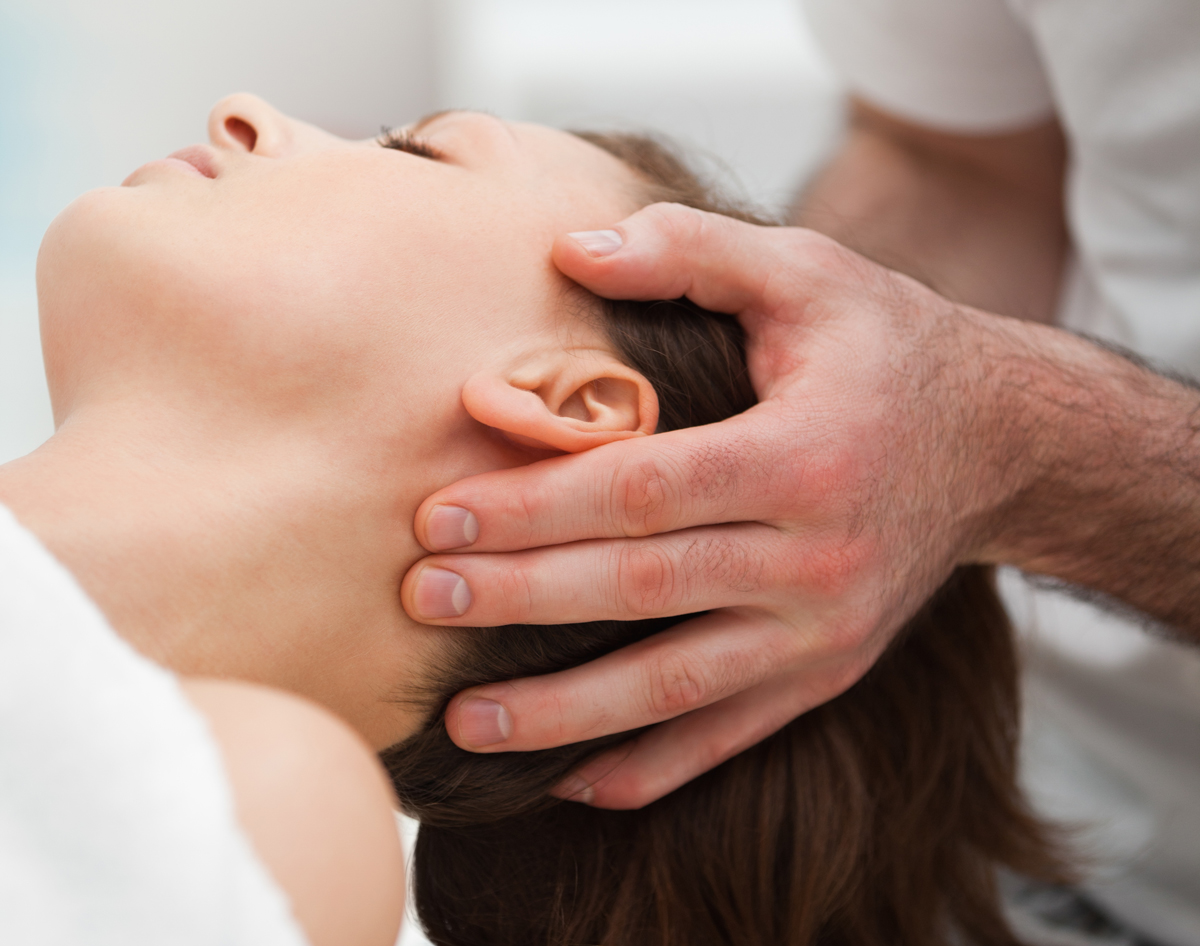
Photograph by Wavebreak Media / Getty Images Plus
Sometimes I feel like I’ve swallowed a hummingbird, its wings beating 80 times per second, its nickel-weight body rebounding inside my ribcage. Meditation, talking it out, and yoga help calm this anxiety, which I experience most when I think I’ve been wronged, made a mistake, or am misunderstood. But still it takes flight in my body. I tense up, and I sweat. It’s uncomfortable.
So I was intrigued when a friend told me about CranioSacral Therapy (CST), one of the ancient “subtle therapies”—think Reiki, hypnotherapy, and gemstone therapy—that seem to be gaining more attention and traction in these overstressed times.
Clinical researcher, biomechanics professor, and osteopathic physician John E. Upledger pioneered and developed CST from 1975 to 1983. It is a “gentle, hands-on method of evaluating and enhancing the functioning of a physiological body system called the craniosacral system—comprised of the membranes and cerebrospinal fluid that surround and protect the brain and spinal cord,” according to the Upledger Institute International.
Using a soft touch no greater than five grams—coincidentally the same weight as a hummingbird—the therapist places a palm or fingers on certain points on the body, reportedly helping to unlock the flow of energy and release trauma that is stored at a cellular level. Maybe that sounds ridiculous. It could be. Some researchers say the studies thus far have been too small and too low-quality to be definitive. Other doctors go so far as to call CST downright quackery.
But even the venerable Mayo Clinic says “stress that’s left unchecked can contribute to many health problems, such as high blood pressure, heart disease, obesity, and diabetes.” So who am I to reject the claims of CST without trying it?
This is how I ended up on the soft and heated massage table of Maureen “Molly” Grady, an Advanced III CranioSacral Therapist who studied with Upledger and now offers her treatments at Atlanta CranioSacral Therapy in Buckhead. She is also a licensed counselor.
She started by softly placing a palm on my hip and another under my back, then asked me some gently prodding questions: Where do you feel tension the most? Where do you think you store stress in your body? Can you remember when you first felt that tension, how old you were, what you looked like?
Inexplicably, my head began to spin, almost like I’d had too much to drink. I found myself digging into a long-ago memory: It’s me as a third-grader, all skinned knees and bad 1980s haircut, at the local park on my own, hitting a tennis ball against the backboard and being watched by a man chewing on the end of a deflated balloon. When I won’t respond to his hellos, he lunges at me. I drop my racket, abandon my banana-seat bike, and run all the way home. The police pick him up shortly after, and they bring him to my house. I am asked to identify him in the driveway. He smiles and waves at me from the cruiser’s backseat.
On Grady’s table, I found myself scrunching my eyes and shrugging my shoulders to my ears. My brain was saying: This is not a big deal, other people have had it worse, get over it. But my body said otherwise; I was bracing against the fear of that moment. Grady moved her hands to other points on my face and neck, urging me to feel the emotion and then let it slip away. And, very slowly, it did.
Can I scientifically prove that her hands and energy made this happen, or that the session will have long-lasting effects? No. But I can say that the hummingbird has slowed its wing-beat, at least a little bit, at least for now.













